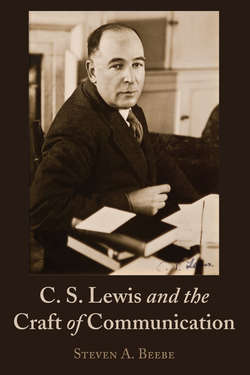Читать книгу C. S. Lewis and the Craft of Communication - Steven Beebe - Страница 31
На сайте Литреса книга снята с продажи.
Arthur Greeves: First Friend and Intimate Confidant
ОглавлениеIt was during Lewis’s time at Malvern College that he met Arthur Greeves, a trusted confidant who had a personal influence on Lewis’s experiential insights about the nature of friendship and interpersonal communication. Greeves lived just across the street from Lewis when the Lewis family moved to Little Lea in 1905, although the boys did not meet until 1914, when Greeves was home, ill, and confined to his room. When at last they did meet, they immediately discovered that they had a mutual love of Norse mythology and developed a close, personal friendship that would last for Lewis’s entire life. Lewis wrote more letters to Greeves than to anyone else, and Greeves was one of Lewis’s most loyal “audiences” and confidants. Lewis suggests that their compatible differences enriched their friendship:
Though my friendship with Arthur began from an identity of taste on a particular point [Norse mythology], we were sufficiently different to help one another. His home-life was almost the opposite of mine. His parents were members of the Plymouth Brothers, and he was the youngest of a large family; his home nevertheless, was almost as silent as ours was noisy …46
Lewis describes Greeves as a “First Friend”—someone whom Lewis describes as an “alter ego, the man who first reveals to you that you are not alone in the world by turning out (beyond hope) to share all your most secret delights.”47 Lewis further adds, “There is nothing to be overcome in making him your friend; he and you join like rain-drops on a window.”48 Lewis’s close friendship with Greeves provided a comfortable “backstage” relationship in which Lewis could be his uncensored self and fearlessly propose kernels of new ideas that eventually grew into books, lectures, and essays. Although Greeves was gay and never married, no evidence suggests that his sexual orientation was an obstacle in his and Lewis’s life-long relationship.49 Lewis remained loyal to his trusted friend and exchanged letters with him (although there were sometimes long gaps between letters over the course of their friendship) until the last few weeks of Lewis’s life.
In The Four Loves, Lewis describes the nature of friendship. He may have had Greeves in mind when he wrote, “Friendship arises out of mere Companionship when two or more of the companions discover that they have in common some insight or interest or even taste which the others do not share and which, till that moment, each believed to be his own unique treasure (or burden).”50 Perhaps recalling when he and Arthur first met and both discovered their mutual interest in Norse mythology, Lewis adds, “The typical expression ←43 | 44→of opening Friendship would be something like, ‘What? You too? I thought I was the only one.’ ”51
The correspondence between Arthur and Jack has been compiled in a book edited by Walter Hooper, aptly titled They Stand Together. Lewis used the phrase “they stand together” to describe the importance of friendship in several of his works, including both his autobiography Surprised by Joy and The Four Loves. Effective communicators need attentive sounding boards, safe places to try out new lines of thought, honest editors, and trusted confidants to share and develop ideas. Arthur was such a loyal friend to Jack. The two stood together their entire lives.
